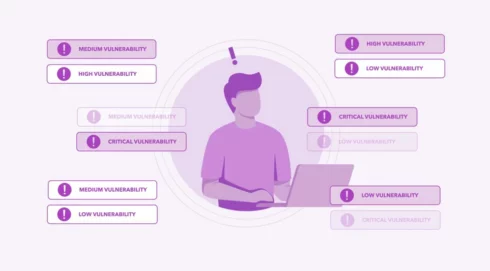

Azul has introduced an replace to its Vulnerability Detection resolution that guarantees to scale back false positives in Java vulnerability detection by as much as 99% by solely flagging vulnerabilities in code paths which can be really used.
Based on Azul, typical scanners scan JAR recordsdata for parts by identify, fairly than what the JVM really hundreds.
Erik Costlow, senior director of product administration at Azul, defined due to the way in which Java purposes work, every element comprises many courses, and although a element could also be within the Widespread Vulnerabilities and Exposures (CVE) database, an utility won’t be loading the a part of the element that’s susceptible.
“Log4j, for instance, has over 10,000 courses, and there’s solely like 5 or 6 of them which can be really susceptible. So, what we discover is that many individuals use the susceptible issues, however they use it in a protected approach,” he stated.
As one other instance, CVE-2024-1597 describes a vital (9.8 out of 10 rating) vulnerability in pgjdbc, which is a PostgreSQL JDBC driver. The vulnerability permits SQL injection if PreferQueryMode=SIMPLE is used. Nonetheless, the entry within the CVE database says “Notice this isn’t the default. Within the default mode there is no such thing as a vulnerability.”
A developer could be utilizing this element and until they exit of their approach and use PreferQueryMode=SIMPLE, they’re protected, Costlow defined.
“What occurs is many individuals have a look at this rating, and so they say it’s a ten out of 10, drop the whole lot, dedicate my engineers to take care of this safety vulnerability,” stated Costlow. “However the reality is, nearly all of them are utilizing it within the default mode, by which case there’s no vulnerability. So, if I’ve taken my individuals off all of the necessary work that they’re doing, and I’ve stated, ‘go repair this vulnerability, patch it proper now’ as a result of it’s a vital 10 out of 10, I’ve simply wasted an enormous period of time.”
Based on Costlow, this kind of situation the place a developer could be utilizing a vulnerability element, however not really activating the a part of it that’s susceptible is pretty widespread.
The newest replace to Azul Vulnerability Detection makes use of a curated data base that maps CVEs to courses which can be used at runtime. The corporate constructed this by trying on the CVE database and asking how lots of the parts really associated to Java. Subsequent, it went by way of these parts and discovered what components of them are problematic and why.
This curated database allows Azul to flag if one of many susceptible courses within the CVE database is definitely being utilized by the parts in a Java utility, or if the applying is utilizing different courses of a susceptible element that aren’t thought of to be susceptible items.
“What Azul does with vulnerability detection that’s totally different from lots of the different scanners is we regularly watch that utility to say, ‘did you really use the factor?’ It’s one factor to have the susceptible element. Individuals have susceptible parts. There are various issues that pose a threat to you, however the query is, do you really use it in a approach that poses a threat to you? What we discovered, is that fairly typically that reply isn’t any,” Costlow stated.

